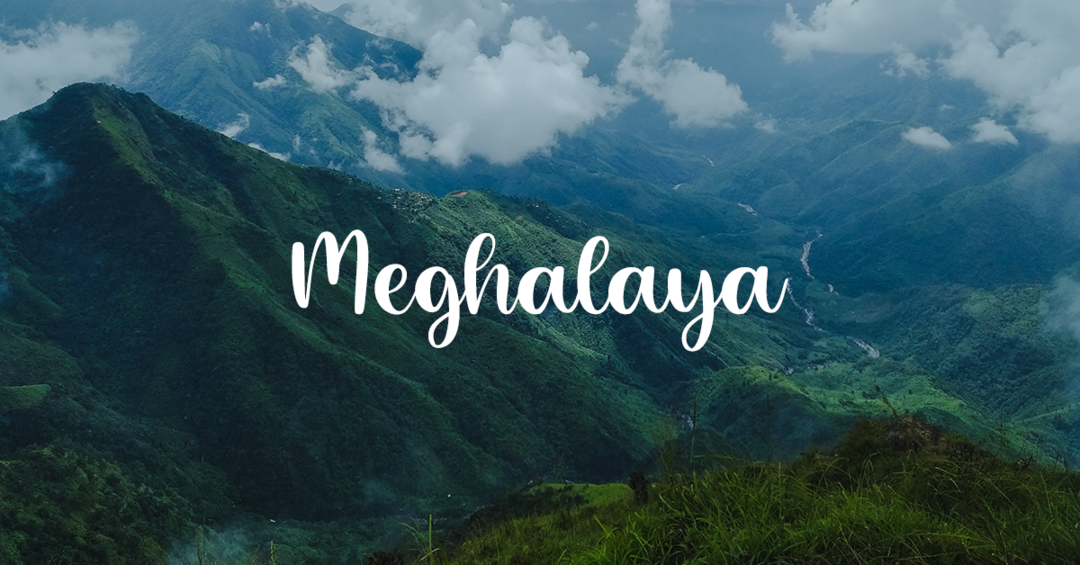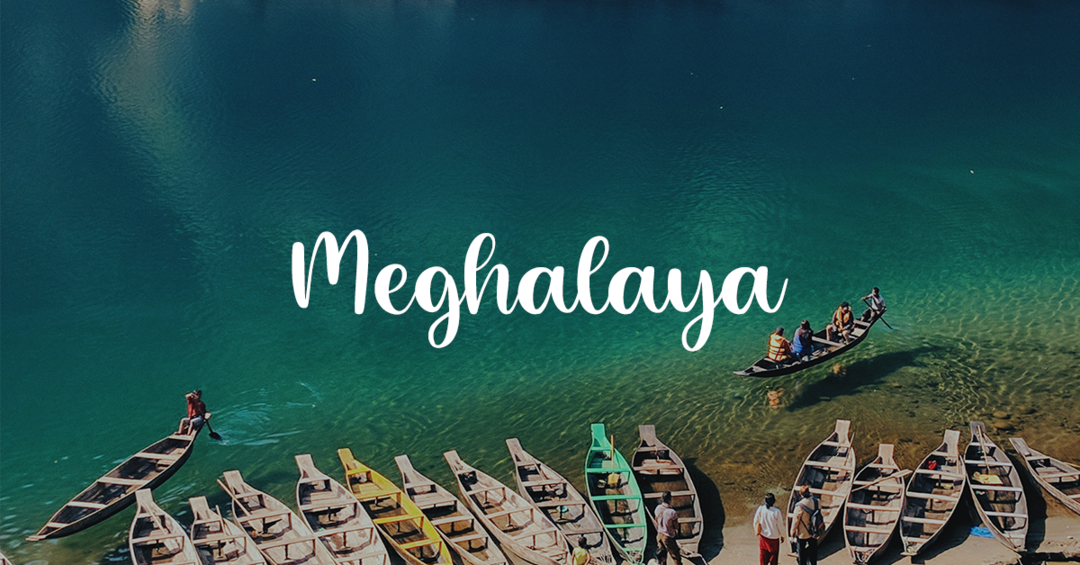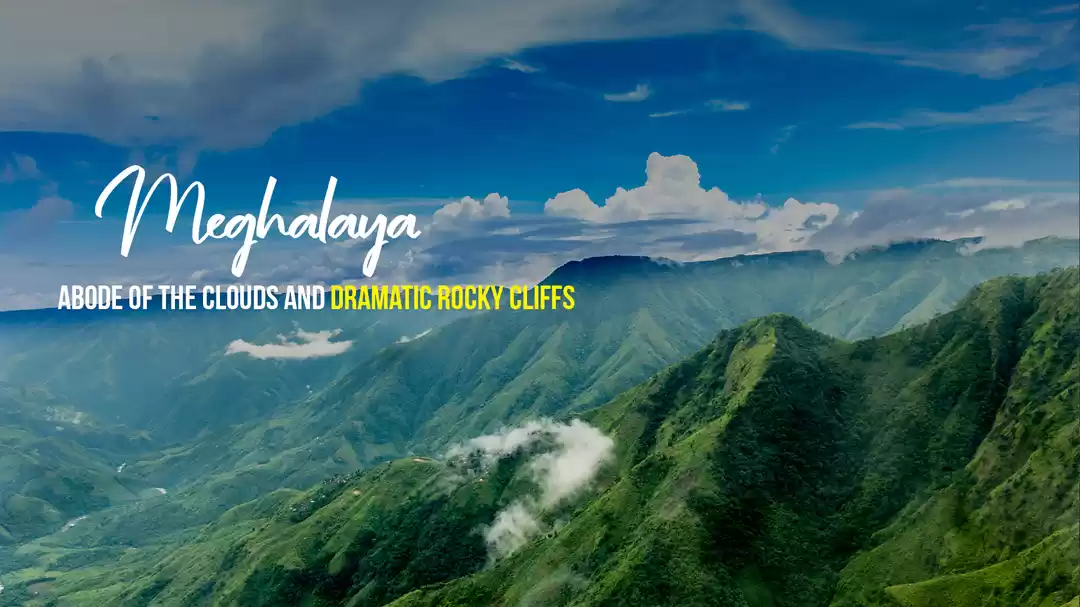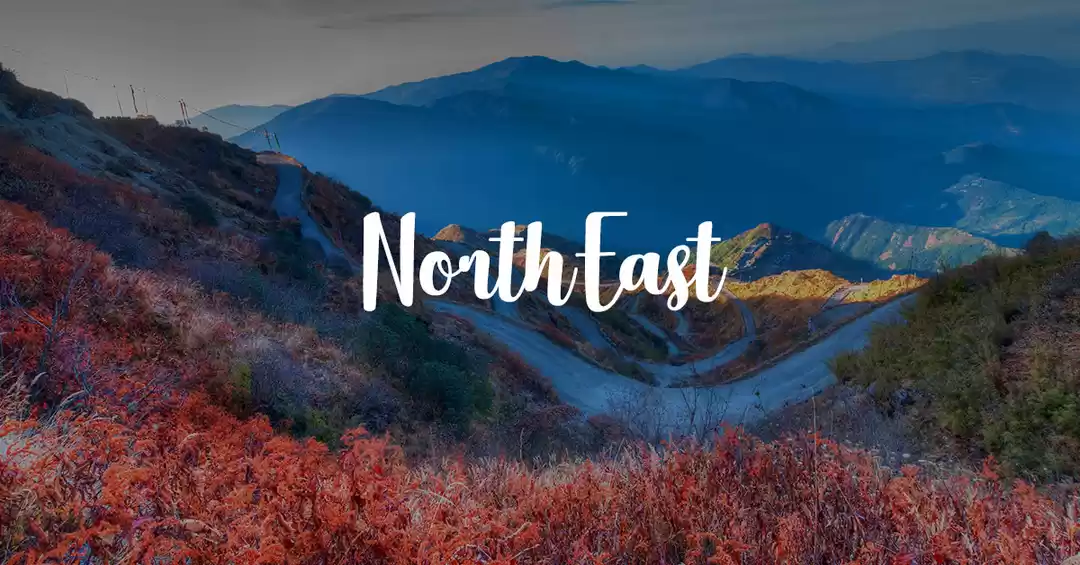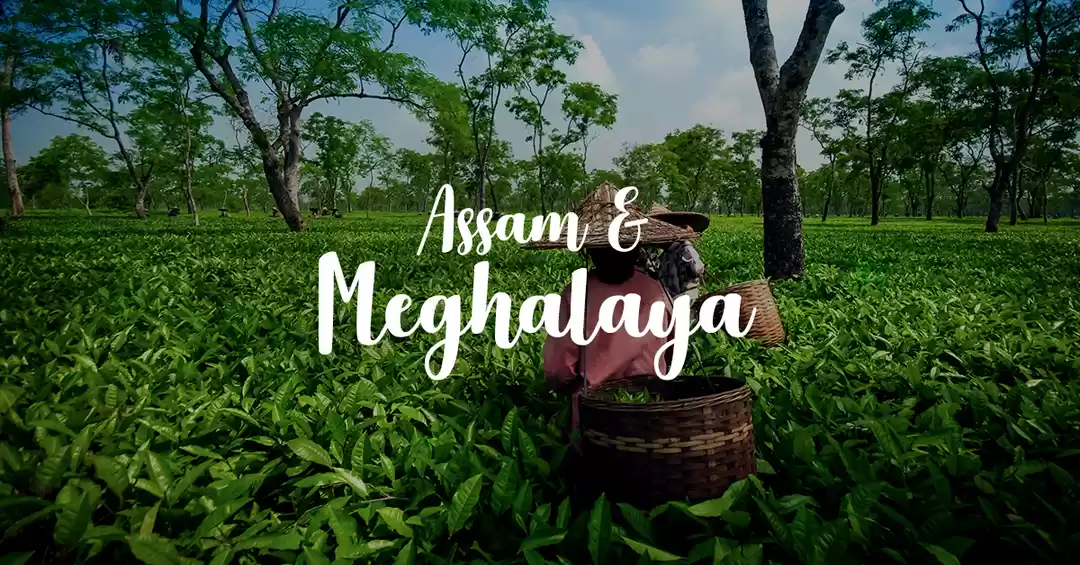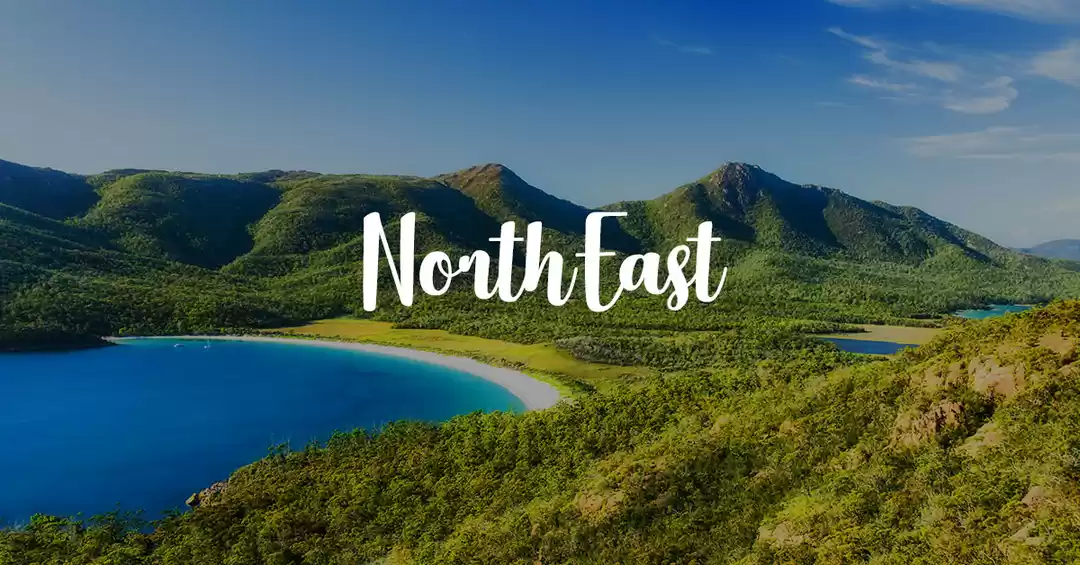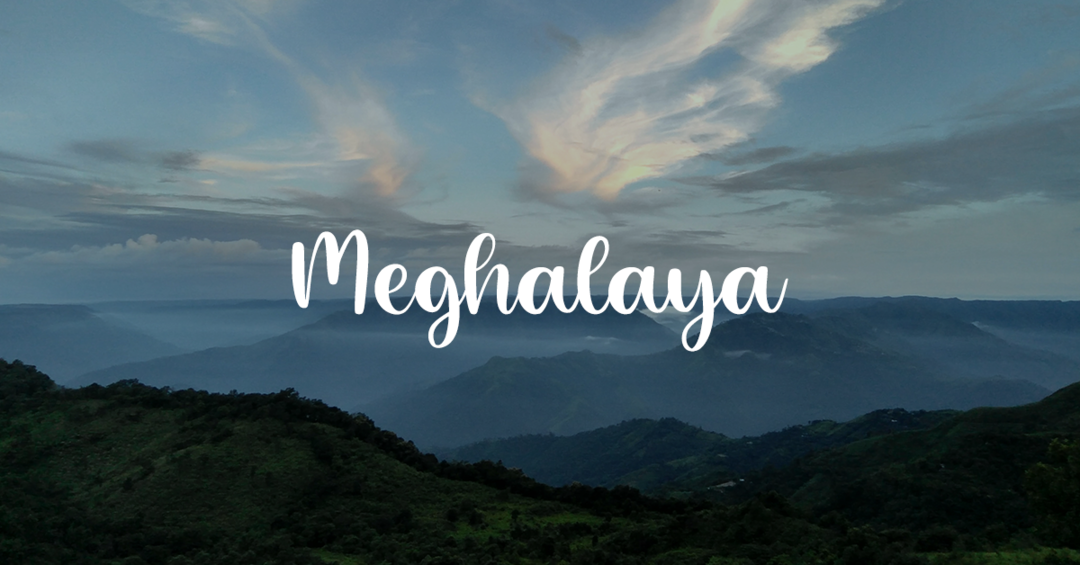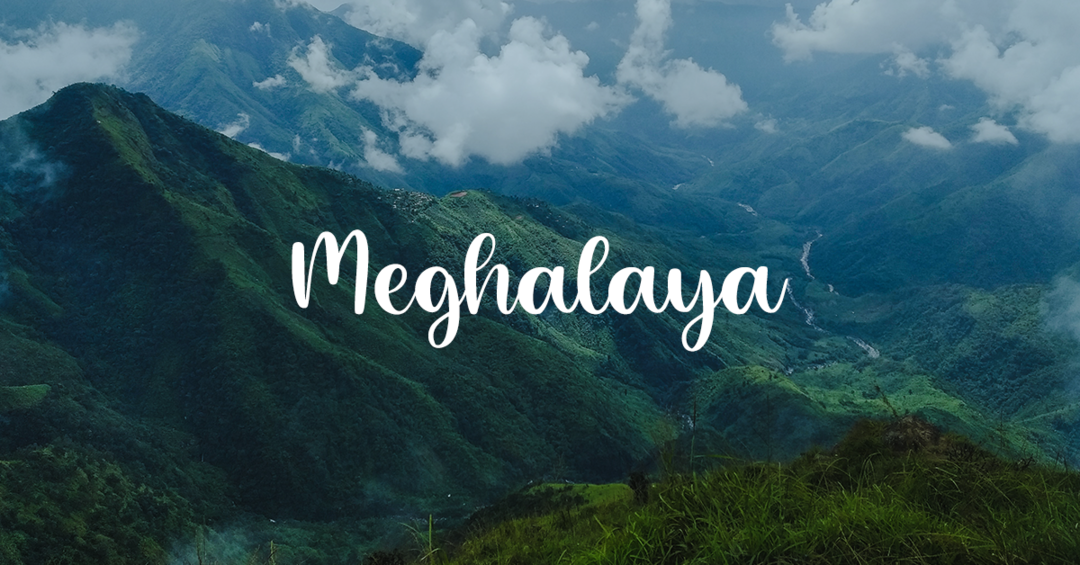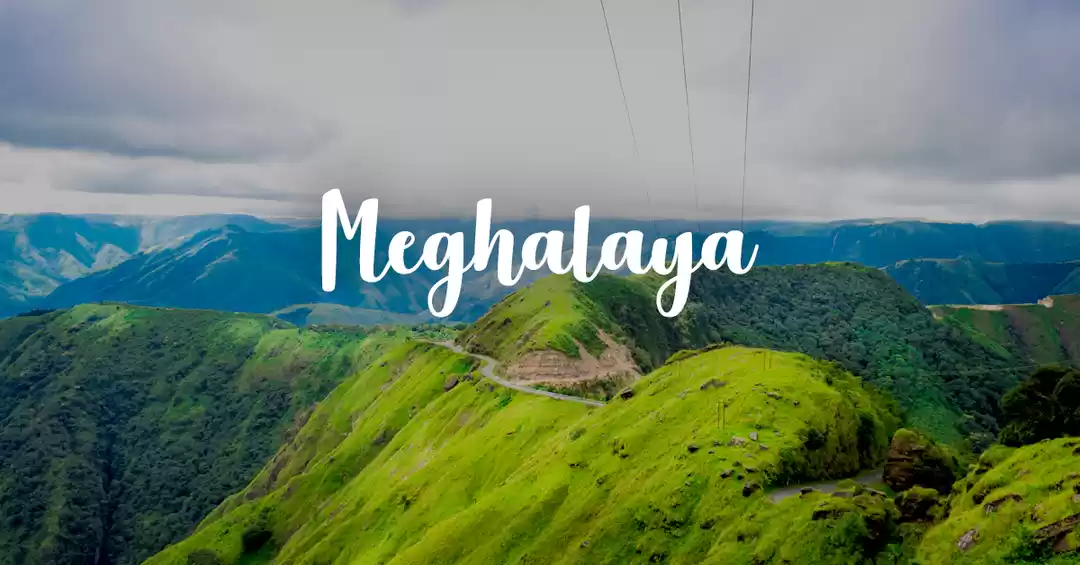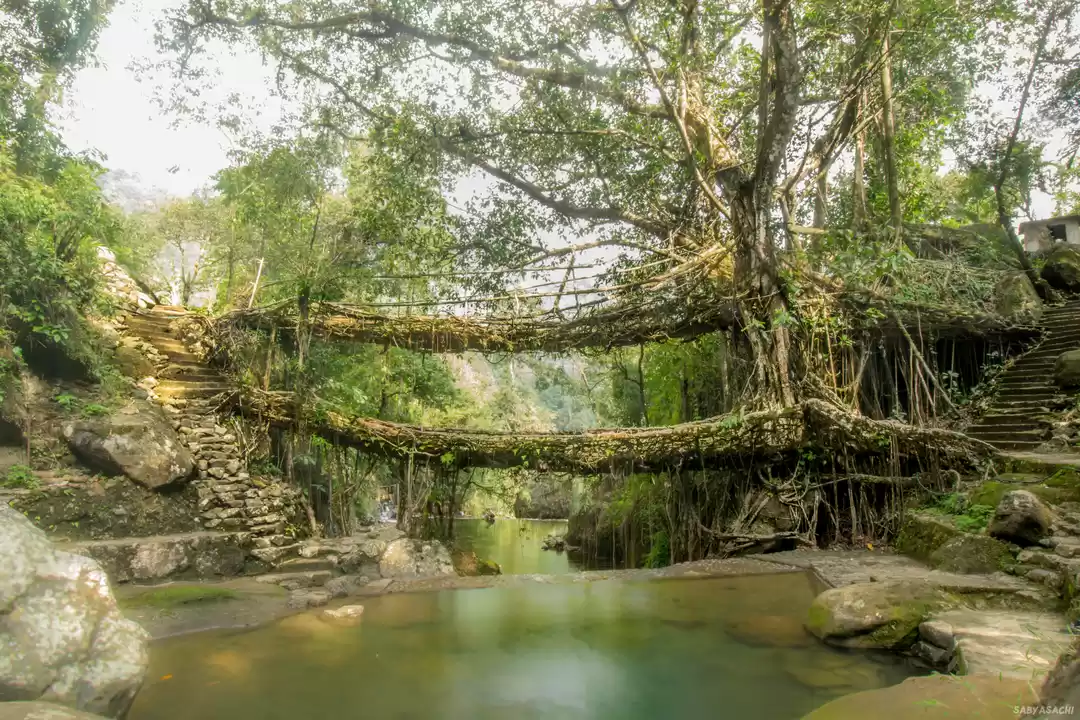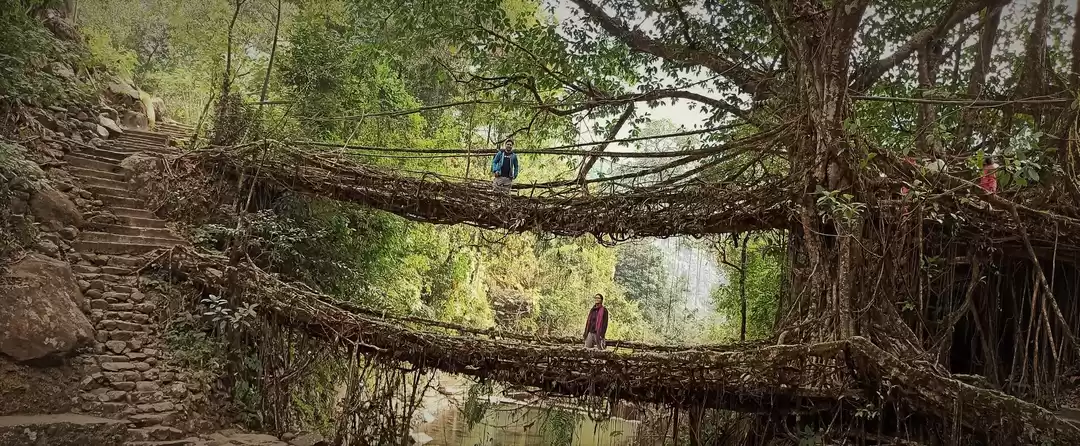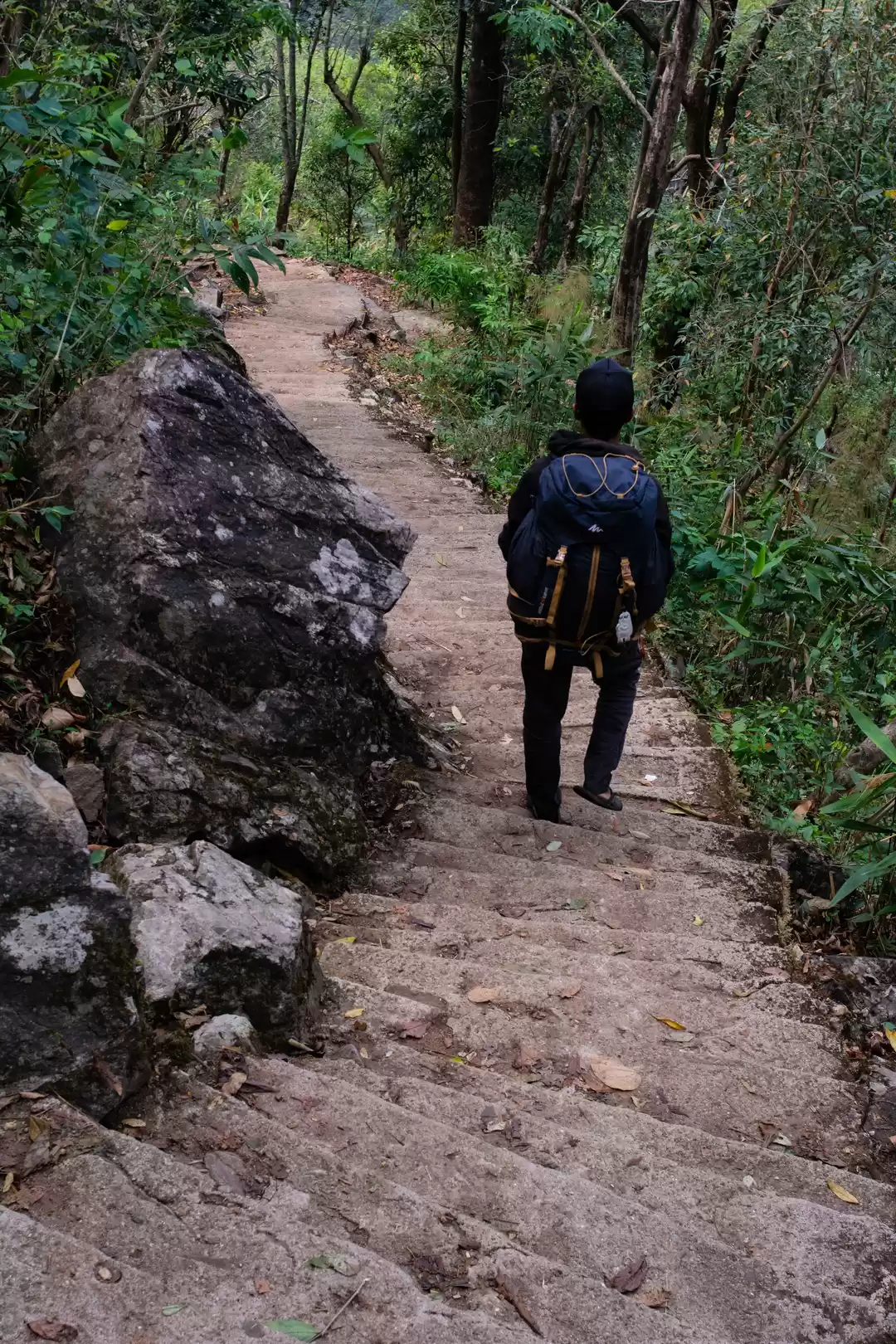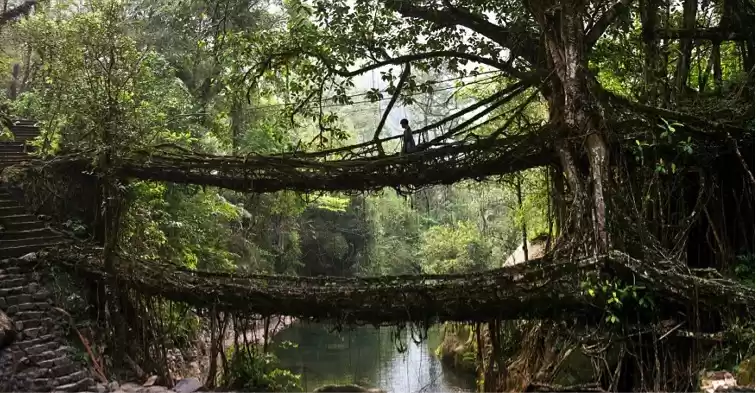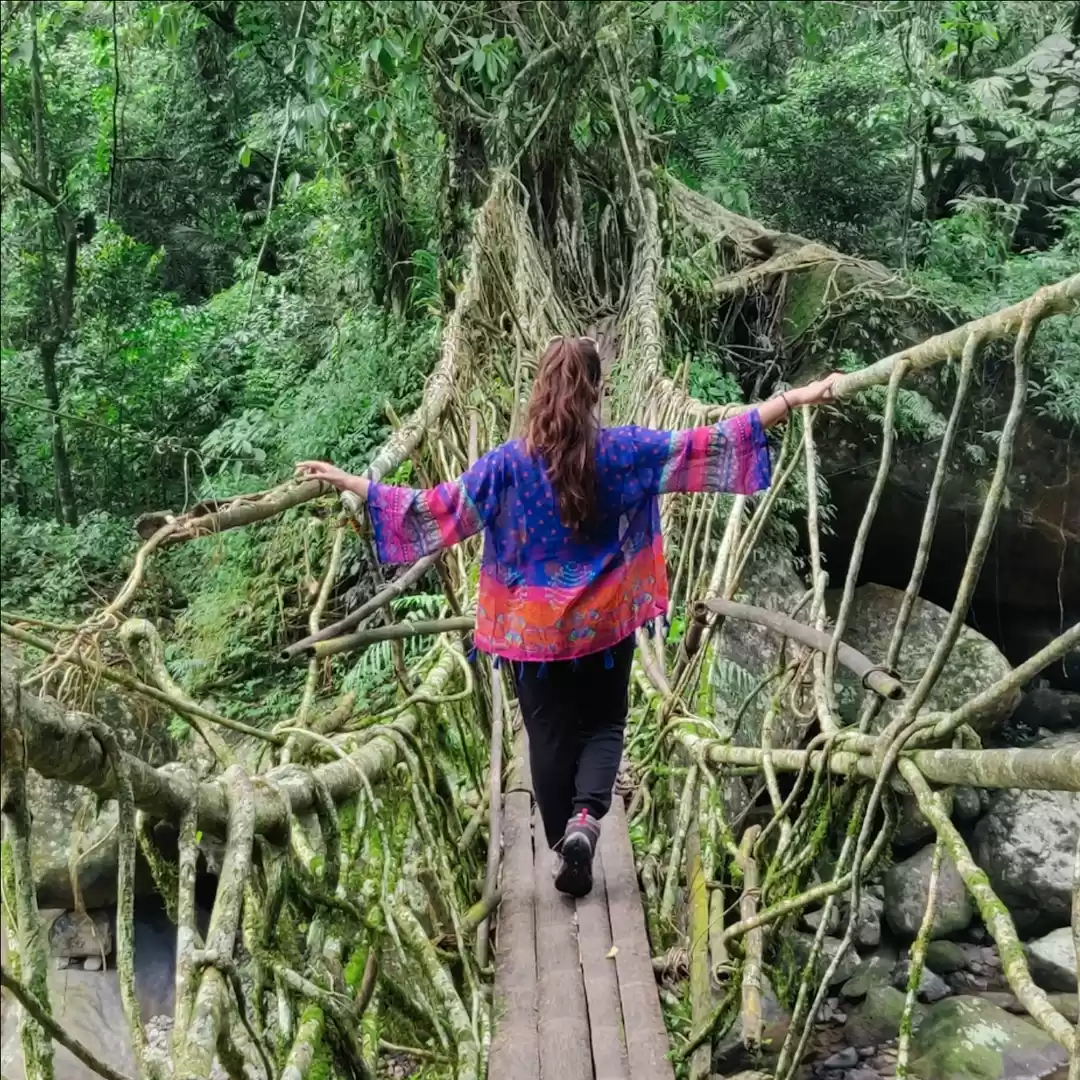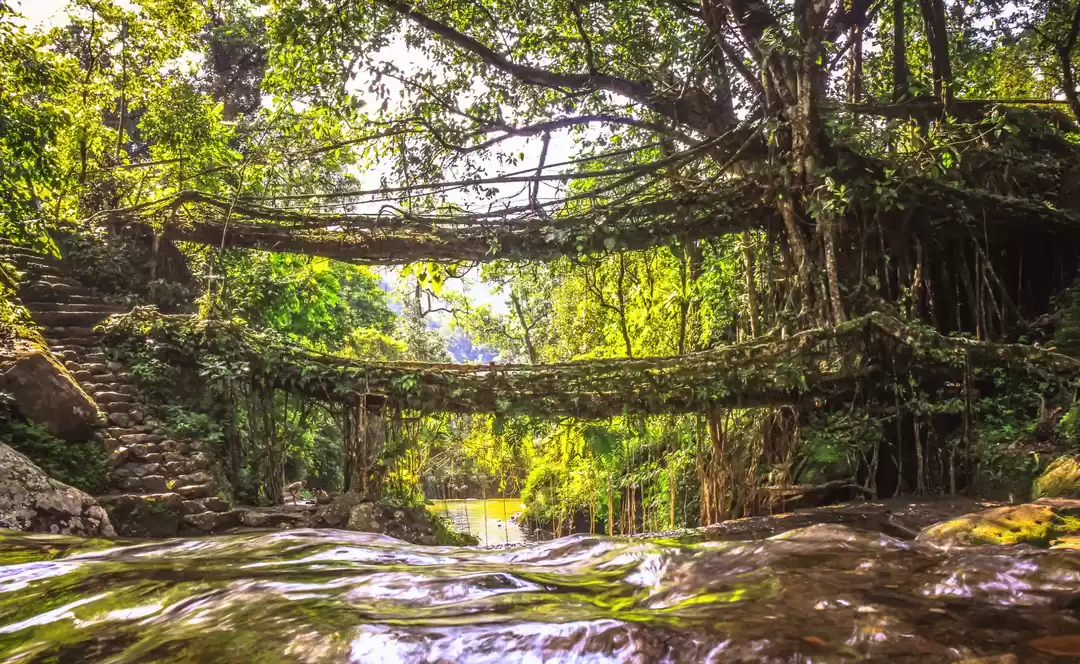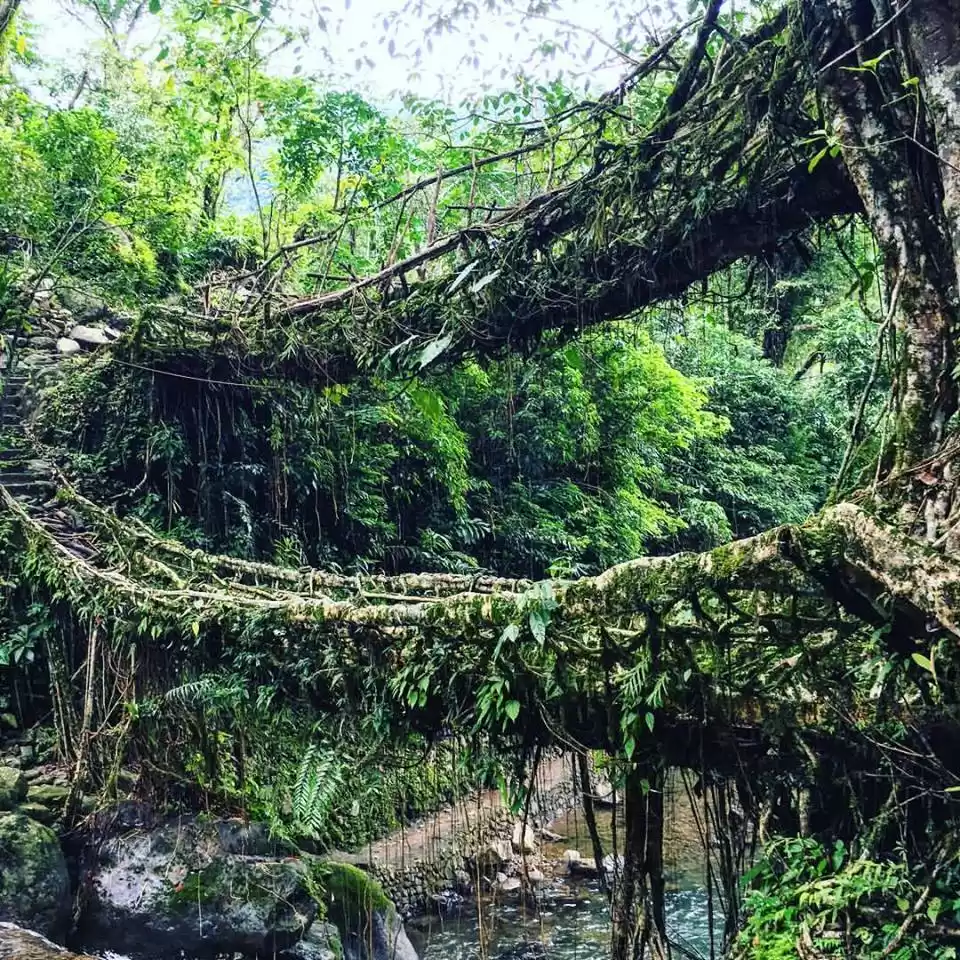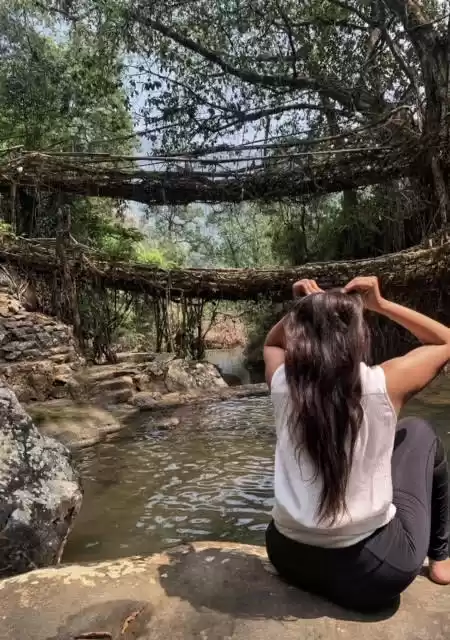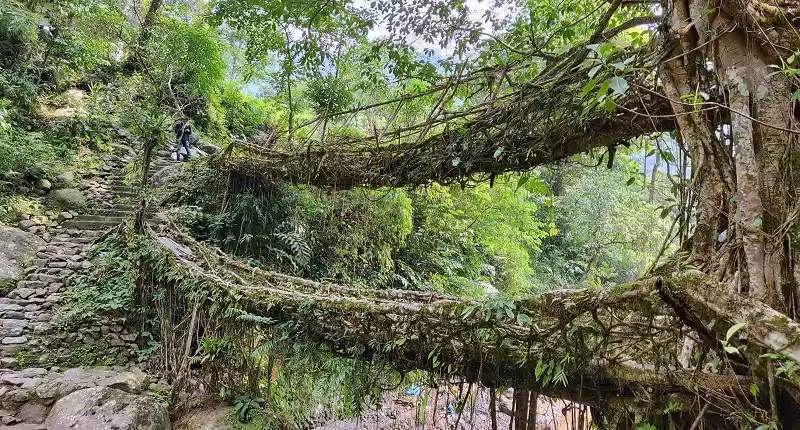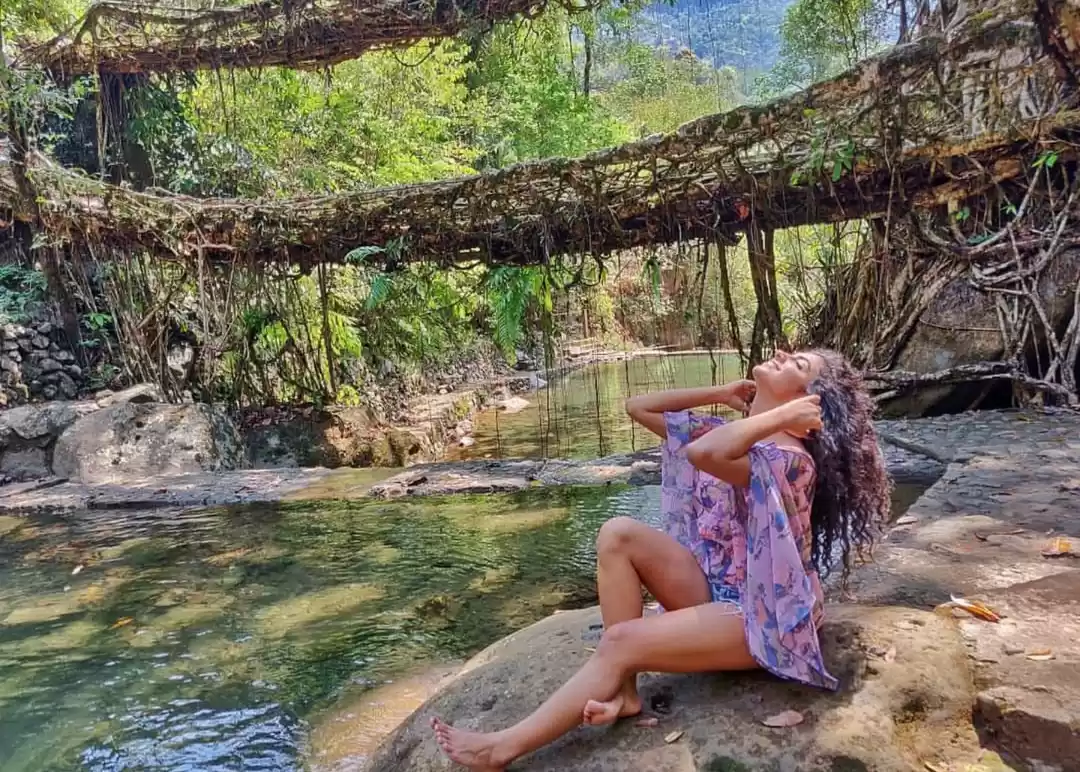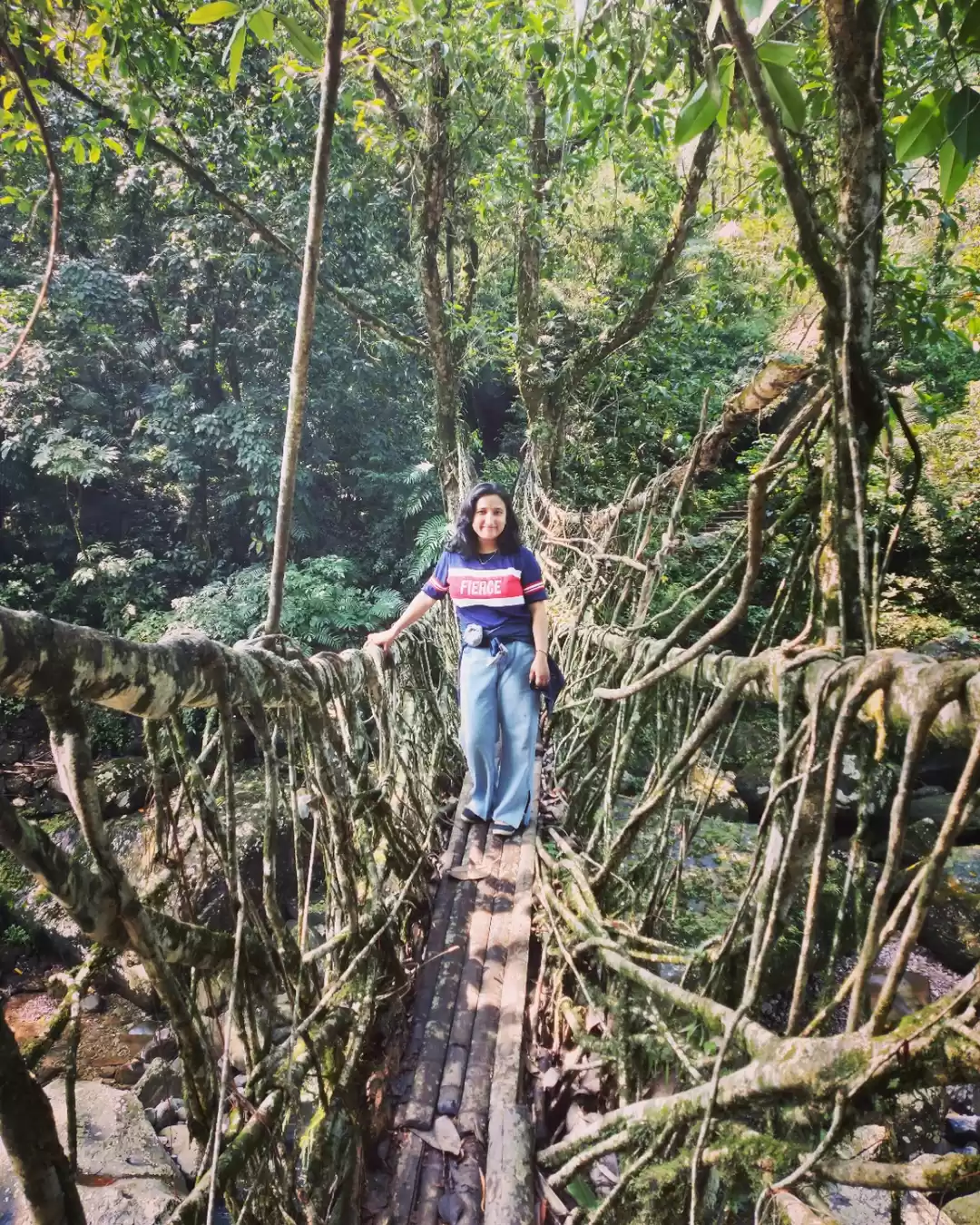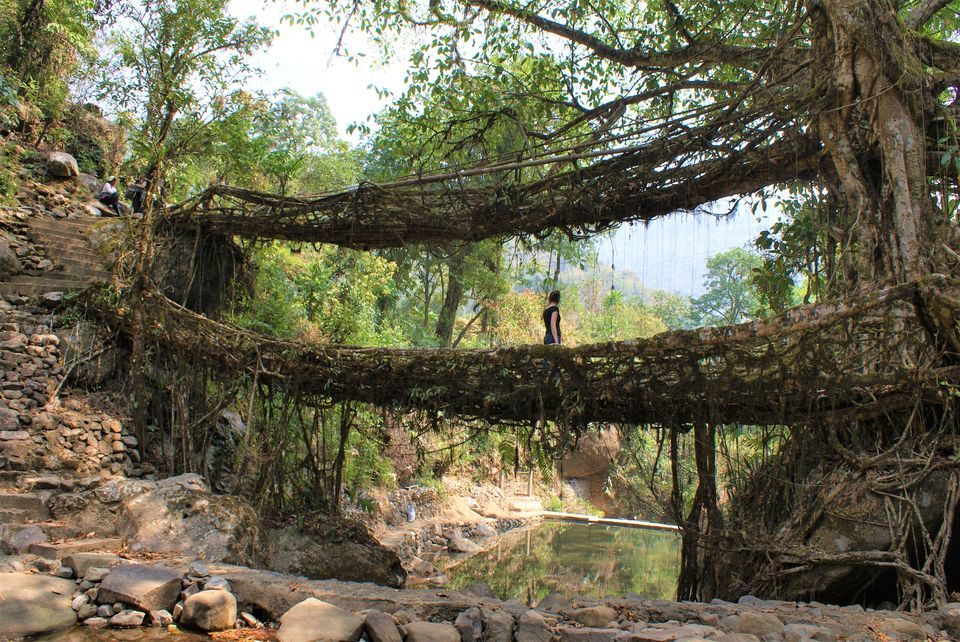
Meghalaya is home to the man-made root tree bridges formed by tying the roots of rubber trees. These knots continue strengthening over the years and are hence called live bridges.
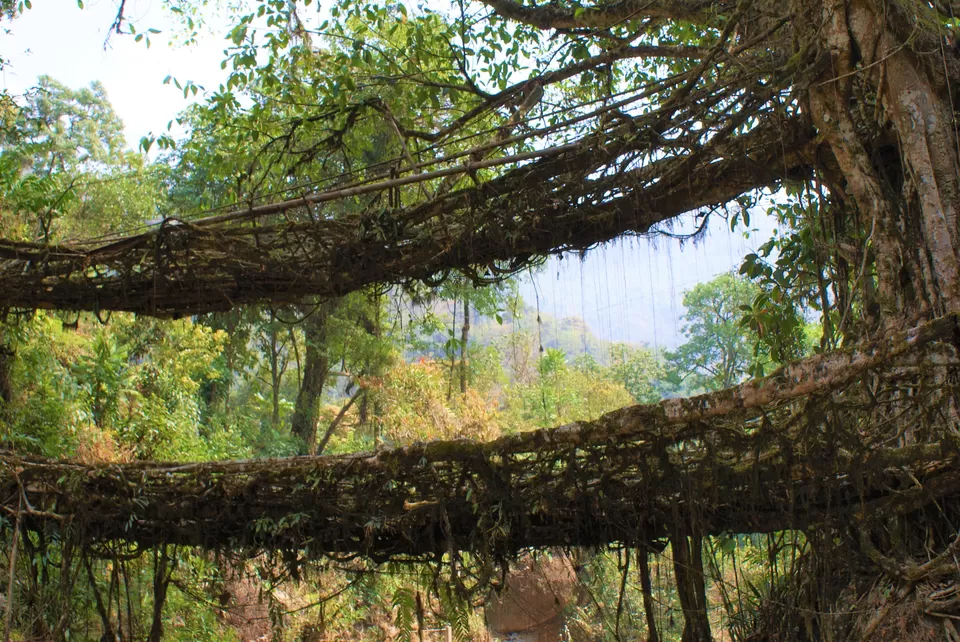
The one in the picture is the double-decker root tree bridge in the East Khasi Hills in Cherrapunji. My husband & I traveled there a few years back before the pandemic turned up to turn our lives upside down. The trek to reach here will be one of those memories that will remain with you for years to come.
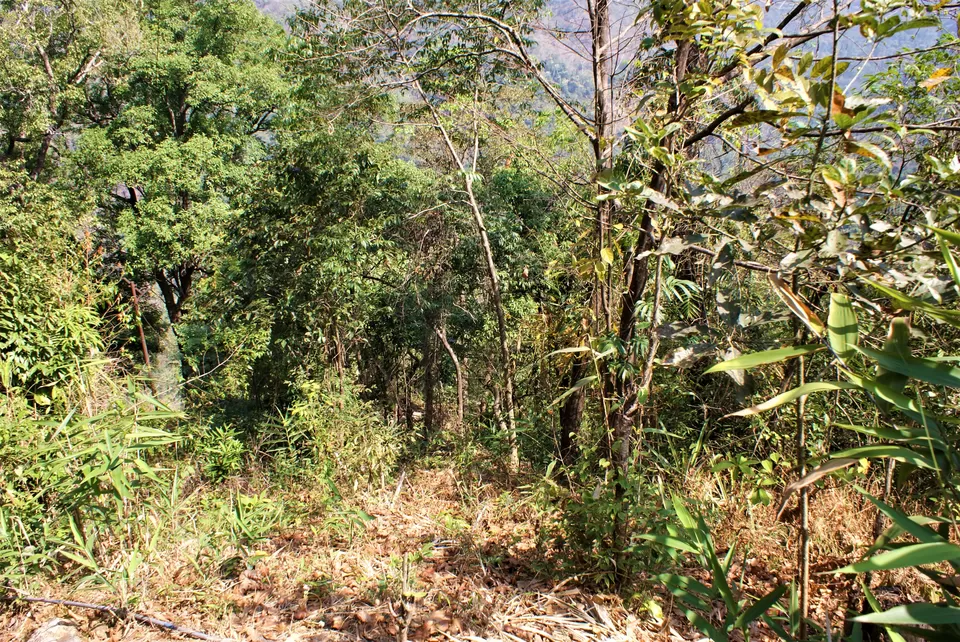
We arrived at Cherrapunji on the second leg of our journey to northeastern India, the first stop being Shillong. We stayed at the Cherrapunji Holiday Resort, a family-run resort atop a hill in Laitkynsew village with gorgeous views of the hills, greens, and plains on the Bangladesh side. There are multiple root tree bridges that you can visit from here. It takes years for a new root bridge to become strong enough to bear the weight of people crossing it. The roots continue to grow and strengthen over time. Some of these bridges are considered hundreds of years old.
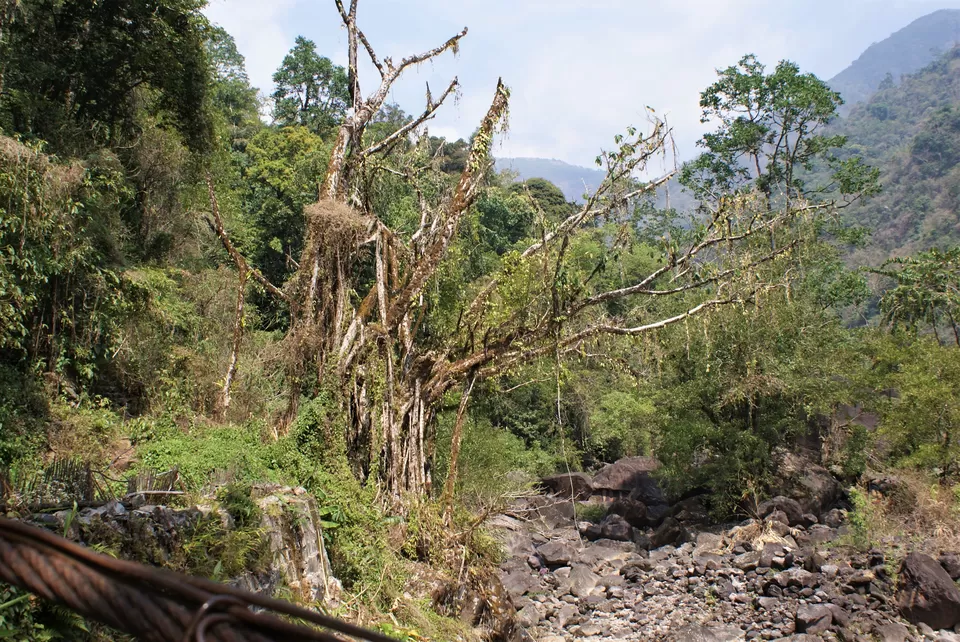
The double-decker root tree bridge means two bridges running parallel to each other. We were given a rough map for the trek by the helpful staff at the resort, and that's all one needs here. Or not. More on that later.
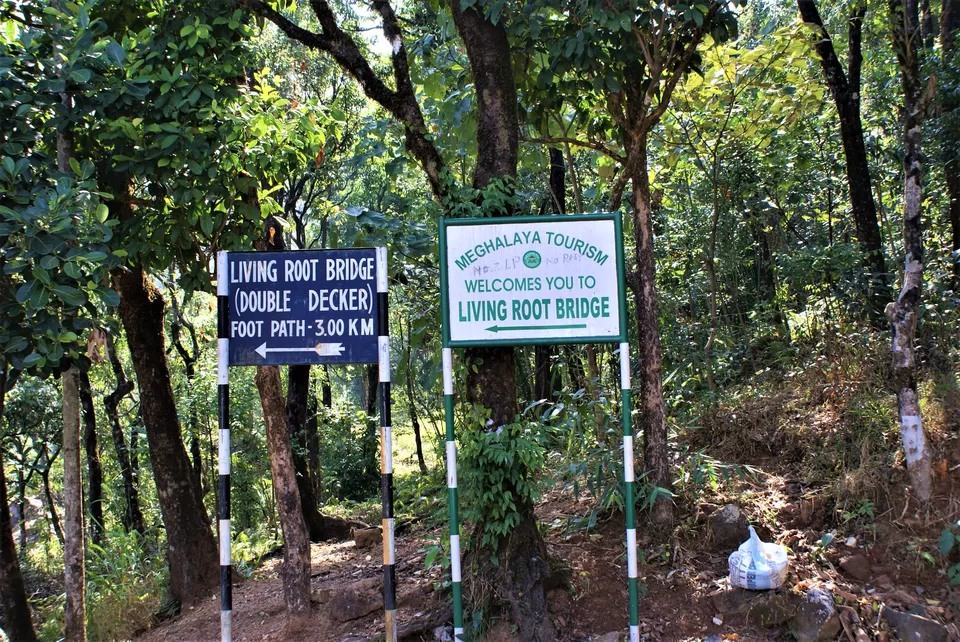
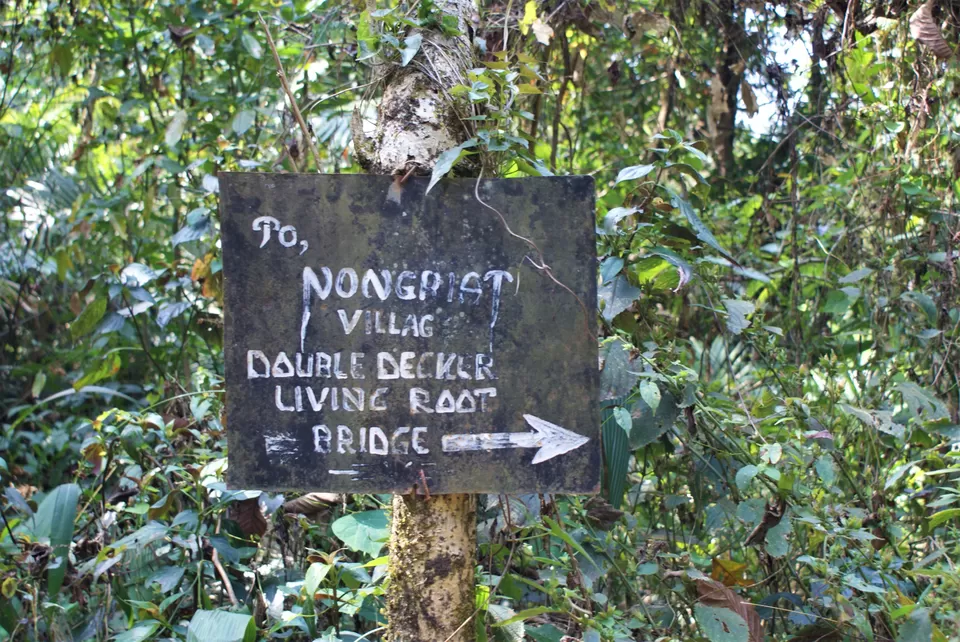
Tyrna village is the base point for the Living Root Bridge trek. We walked from the resort to the Tyrna village, and another 3,000 steps down the hill. The hilly paths across Meghalaya – especially to reach the tree bridges around here – are made simpler with the help of steps. While some of the travelers came with a tourist guide, most of them - like us - went on their own. If you stick to the path with the steps and metal bridges, you don't need the guides. Especially since there are signboards along the path.
After the steps end, you would need to walk for another hour or so to arrive at the double-decker root tree bridge. On the path, you will come across two dainty, squeaking, sketchy, metal rod bridges that shake and grunt over the river, as you walk on them. It was an unspoken rule with our fellow travelers to not test the strength of these bridges and pass over them with three to four people at a time. This is what they must mean when they say think about the end but enjoy the journey. These metal suspension bridges are, most definitely, a highlight of this trek. At the first bridge, you can climb down the path and go for a dip in the river. It's a gorgeous spot for a break, but I'd suggest you reserve this break for the return journey.
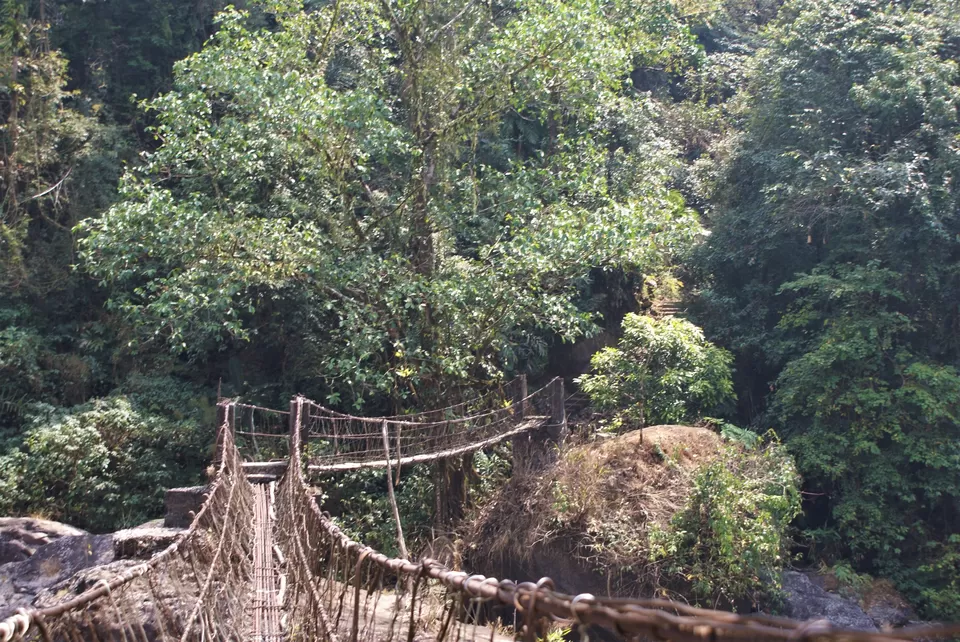
The root bridge is in a tiny little village of Nongriat. There's a nominal entry fee that you need to pay to visit the bridge. After you stop for the entry fee, and before you know it, voila, stands before you is this out-of-the-world man-made live bridge, that you can walk on, touch, and marvel over.
It's definitely one of those views that fill you with awe at the perfect harmony between man and nature.
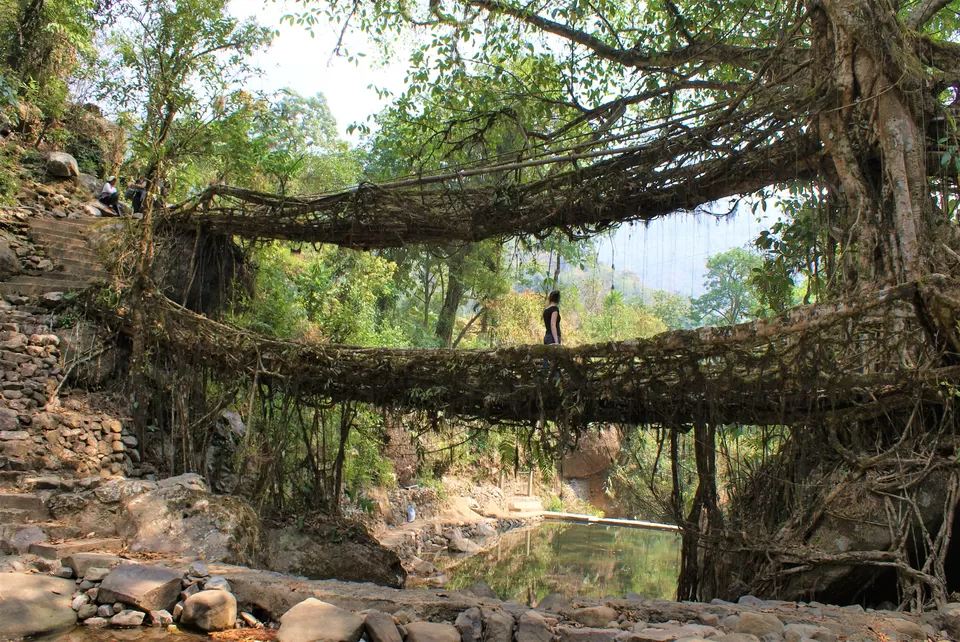
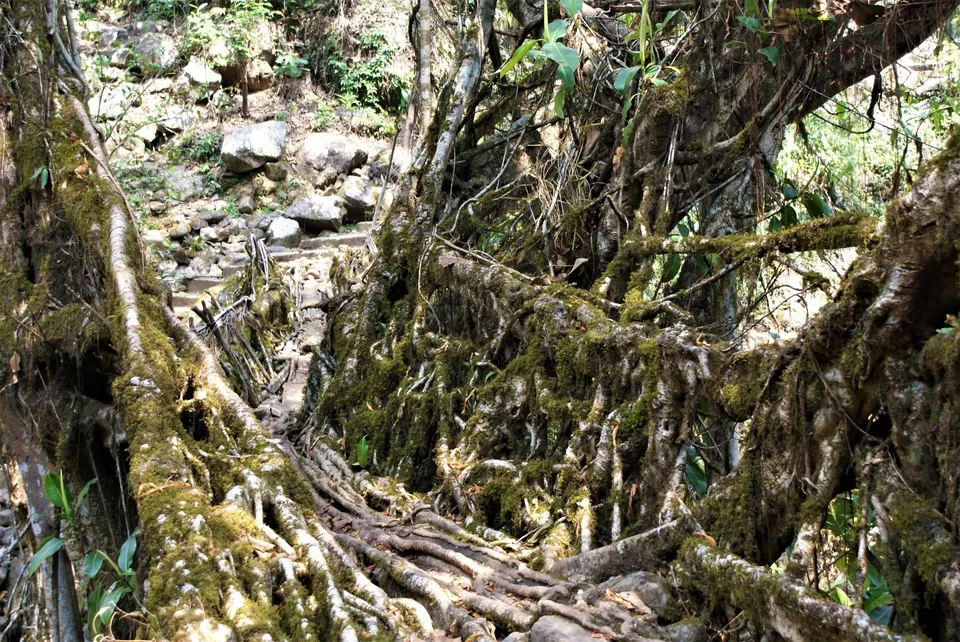
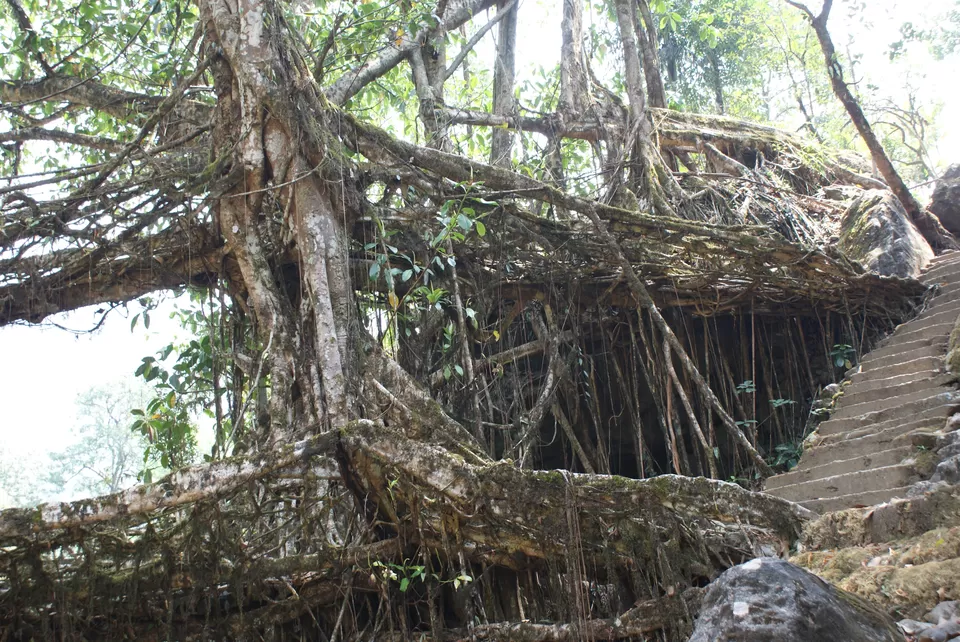

Don’t forget to cool off your tired feet in the water that's right across the bridge.
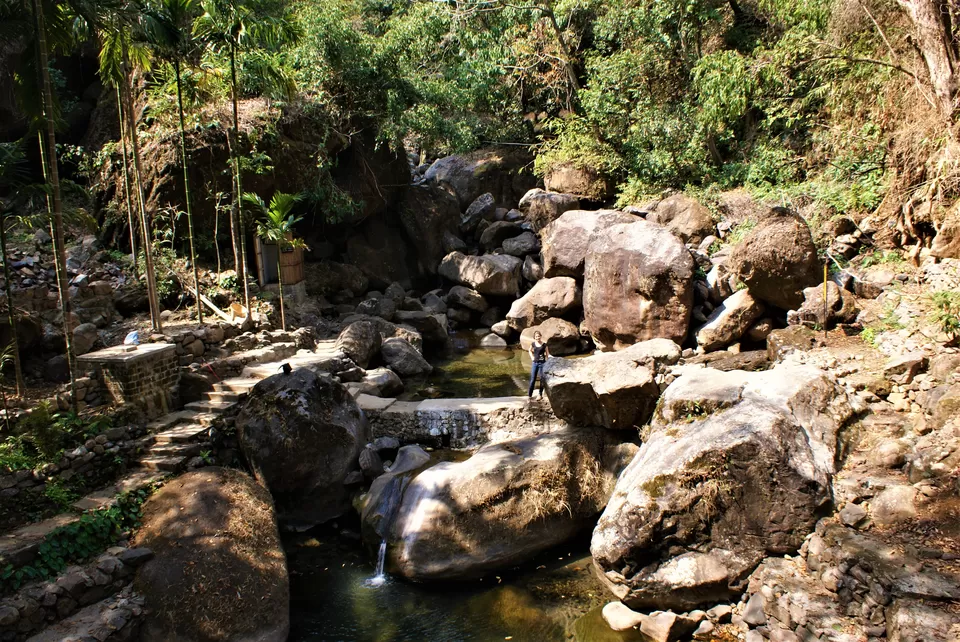
Here are some tips to travel here –
- Get your binoculars if you love bird watching
- Basic trekking advice applies - Wear comfortable clothing and shoes. Carry water
- It is recommended to visit here any time of the year except monsoons, but oh gosh, would the monsoons here be fun!
- Start the trek early. Since this is the east, the sun sets early, you don't want to be left without sunlight in the dense tropical forests
- Check restrictions and extra precautions on travel, on account of Covid
The trek to reach this place is relatively simple, and so on the way back, we chose a lesser-used and longer route because torture leads to nirvana. This meant walking through the heightened sounds of gushing streams and loud sounds of insects that could drain out any scope of a conversation in the dense forests. The trek back was beautiful yet brutal. Well, brutal also because we lost our way and met no villagers on the route to guide us back. There was a point when my legs started to shake because of exhaustion, and I had to climb huge rocks while ignoring the gushing sounds of the river on one side. I am happy to report there was paranoia and anxiety, but no tears. Finally, we managed to reach our resort a good nine hours after we had started.
But well, what doesn’t kill you helps make memories. And boy, did we make some!





